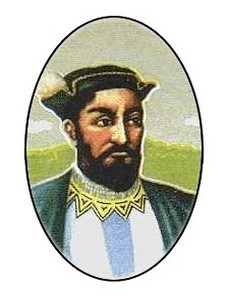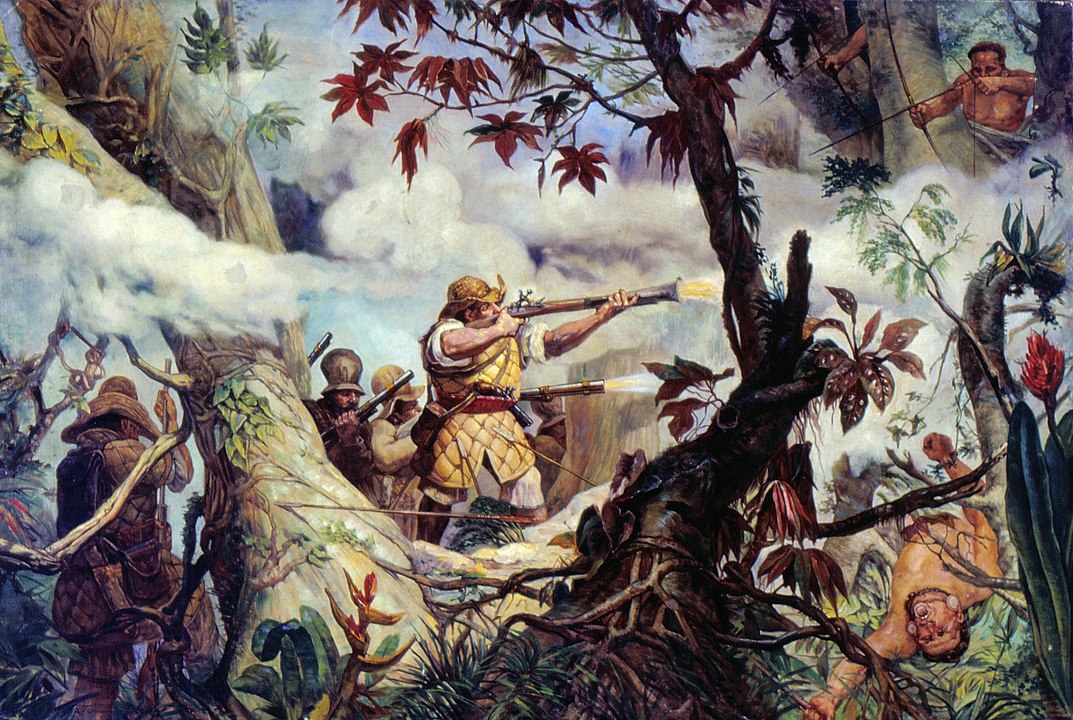1630 CE was not marked by any big developments in the history of Western takeover of the world. It did bring the first of three terrible famine years to Western India and a small success for the Dutch in Brazil. Famine first.
Western India famine of 1630-32
I have a few sources on this but the English-WP page, though short, is well-organized. Here’s what it says:
The Deccan famine of 1630–1632 was a famine in the Deccan Plateau, Khandesh and Gujarat. The famine was the result of three consecutive staple crop failures. The main reasons were climate and plague, leading to intense hunger, disease, and displacement in the region. This famine remains one of the most devastating famines in the history of India, and was the most serious famine to occur in the Mughal Empire.
A Dutch report of the famine in Surat noted that the famine was the result of three consecutive staple crop failures, leading to intense hunger, disease, and displacement in the region. Some also claim that the demands of the army of Shah Jahan camped at Barhanpur was one of the reasons behind the famine. About three million people died in Gujarat in the ten months ending in October 1631 while another million died around Ahmednagar. The Dutch report gives an overall death toll of 7.4 million by late 1631, which might be for the whole region.
This translation from Abdul-Hamid Lahori’s Badshah-Nama is heart-wrenching:
During the past year no rain had fallen in the territories of the Balaghat, and the drought had been especially severe about Daulatabad. In the present year also there had been a deficiency in the bordering countries, and a total want in the Dakhin and Gujarat. The inhabitants of these two countries were reduced to the direst extremity. Life was offered for a loaf, but none would buy; rank was to be sold for a cake, but none cared for it; the ever-bounteous hand was now stretched out to beg for food; and the feet which had always trodden the way of contentment walked about only in search of sustenance. For a long time dog’s flesh was sold for goat’s flesh, and the pounded bones of the dead were mixed with flour and sold. When this was discovered, the sellers were brought to justice. Destitution at length reached such a pitch that men began to devour each other, and the flesh of a son was preferred to his love. The numbers of the dying caused obstructions in the roads, and every man whose dire sufferings did not terminate in death and who retained the power to move wandered off to the towns and villages of other countries. Those lands which had been famous for their fertility and plenty now retained no trace of productiveness.
The Emperor in his gracious kindness and bounty directed the officials of Burhanpur, Ahmadabad, and the country of Surat, to establish soup kitchens, or alms-houses, such as are called langar in the language of Hindustan, for the benefit of the poor and destitute. Every day sufficient soup and bread was prepared to satisfy the wants of the hungry. It was further ordered that so long as His Majesty remained at Burhanpur 5000 rupees should be distributed among the deserving poor every Monday, that day being distinguished above all others as the day of the Emperor’s accession to the throne. Thus, on twenty Mondays one lac [100,000] of rupees was given away in charity.
Dutch take Recife (Brazil) from Portugal
The Portuguese empire had held Recife on the far eastern tip of Brazil since 1536. That was when Duarte Coelho, a Portuguese nobleman and the proprietor of the colonial “captaincy” of Pernambuco, of which Recife was a part, established a small settlement a little to the north. Recife (reef) is named for the long reef running parallel to the shoreline which encloses its harbour. WP tells us that “The reef is not as sometimes stated, a coral reef, but a consolidated ancient beach, now as firm and hard as stone.” And the settlement of Recife was built atop it.
In 1541, Coelho brought a sugar-mill to Recife and his brother-in-law, also a settler, set it up in the floodplain of the Beberibe River at Recife. WP: “At that time the banks of the Capibaribe River were covered by sugar cane.” I imagine the cane was tended and cut by enslaved laborers, since that was extremely hard labor. I imagine, too, that the enslaved workers were some combination of Native people captured from the Brazilian interior by the colony’s notorious Bandeirantes slave-raiders and Africans brought over from the Portuguese slave-raiding positions in (not-distant) West Africa. Sidney Mintz noted in Sweetness and Power (p.33) that “the sixteenth century was the Brazilian century for sugar.”
In 1624, as we know, the Dutch West India Company (GWC) had tried to take a Brazilian port city further south, at Bahia, but were unable to hold it for long. In 1630, they tried again– at Recife. The potential profits for them in doing so were huge. The market for sugar in Western Europe was growing by leaps and bounds. In earlier centuries, Antwep had been (Mintz, p.31) “the refining center for European sugar”. Antwerp had long ago been captured and in good part destroyed by the Habsburgs’ war against the Dutch UP’s– but at that point, most of Antwerp’s technical, manufacturing, and financial expertise had migrated to Amsterdam. So the Dutch would certainly have wanted a source for their sugar. In addition, Recife was well placed to be a layover port for the Dutch trading ships traveling around the Cape of Good Hope as they plied between the East Indies and Amsterdam.
So in 1630 the GWC set out once again to capture a Portuguese colony in Brazil, and this time they succeeded. They established an entire new (and well-fortified) settler-city on an island opposite the original Recife, and named it Mauritsstad. WP tells us that the new city,
was designed by architect Pieter Post. It was named after Governor Johan Maurits van Nassau-Siegen, who had founded the city and the adjoining palace Vrijburgh. Mauritsstad was the cultural center of the New World, with the first botanical garden and the first zoo in America, and a museum with three hundred stuffed monkeys. The city’s Jewish population constructed the first synagogue in the Americas.
(You’ll have to wait some years to find out what happens to it.)



